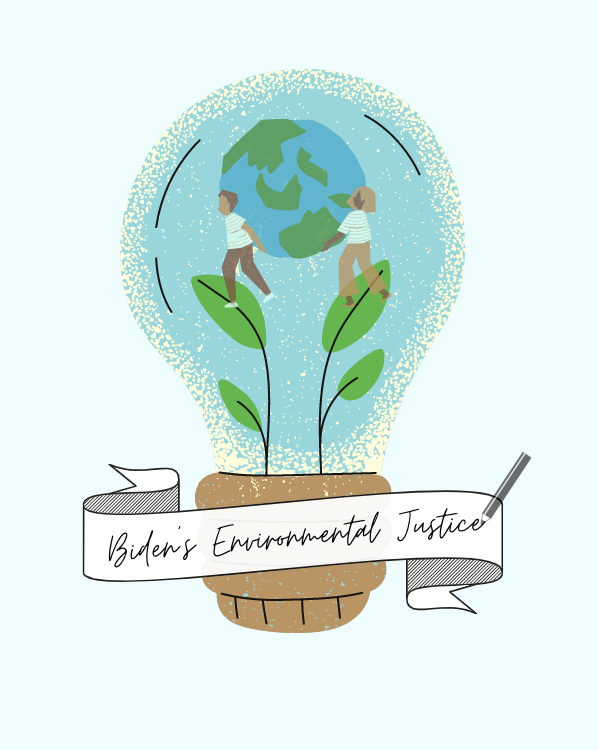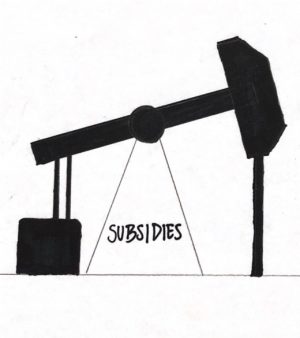Biden’s Climate Plans Running Low on Fuel
Hann
Biden’s proposals of environmental justice fail to meet the need of the world’s current climate crisis.
May 3, 2021
With such a rapid change in policy from the far-right Trump to the moderate Biden administration, since his inauguration, Biden has implemented climate-aimed spending plans that represent a genuine step towards reduction of emissions but is simply not enough.
While climate change has been a large problem for centuries, the accelerated usage of cheap oil, coal and other fossil fuels by countries all around the world has exponentially increased its threat from once nonexistent to one that is pressing.
It has become a matter for governments to create short-term effectiveness for long-term maintenance as our Earth is estimated to reach its point of irreversibility in less than a decade.
“Scientists warn that the coming decade will be critical for slowing heat-trapping emissions, potentially keeping average annual global temperatures from rising more than 1.5 degrees Celsius compared to the mid-19th century.
Right now, the world is on track for an increase of three degrees Celsius, a level that ensures more destructive wildfires and hurricanes, devastation for coral reefs and rising seas flooding the coastlines,” as explained by Lauren Sommar, a reporter for (National Public Radio (NPR).
These effects are already present in society: for example, with the devastating Hurricane Harvey in Sept. 2017, climate change accelerated precipitation by almost 38 percent. And just this February, a disastrous winter storm hit the Midwest, reporting the lowest temperatures in the past three decades.
Now is not the time for policymakers to sit back and watch. With laws governing the masses of today’s society and a majority of people unwilling to make efforts to reduce their carbon footprint, it is up to our policymakers to pave a new path towards recovery by requiring the public to abide by the regulations of climate policy.
For decades, our governments have supported the exponential increase in fossil fuel emissions to drive economic growth. When climate policy has been passed, former presidents have had a hard time following through with their promises.
For example, “The Obama administration pledged $3 billion to the climate fund, but the United States has only paid in $1 billion so far,” said Renee Cho, a writer for Columbia University’s Earth Institute.
While these issues are undoubtedly worrying, with a new administration comes new opportunities. President Biden has only recently been appointed to office and he’s already shown a stance towards combating climate change. Most notably, Biden has his own domestic plans for climate strategy.
“President Biden has mapped out a $2 trillion clean energy and green jobs plan [that has] pledged to cut emissions from electricity to zero by 2035 and to achieve net-zero emissions by 2050 […] Biden signed an executive order instructing all agencies to review actions taken over the last four years that are inconsistent with his climate policies and to suspend, revise or rescind them,” explains Cho.
These include former President Trump’s decreased regulations for methane emissions, fuel economy standards, appliance energy efficiency standards and hazardous air pollutant standards.
Despite what seems to be a clear-cut plan for future action on climate issues, the short-sightedness of the Biden administration’s visions that neglect a long-term solution deem it ineffective.
Last week, Biden proposed a spending plan titled the “American Jobs Plan”. While this plan was created to increase employment by the millions, it also will allocate an ambitious two trillion dollars to improve mass-transit systems, upgrade our power grids, encourage a transition to electrical vehicles, increase research on climate-friendly technology and create a Civilian Climate Corps that works to restore the environment with methods such as establishing alternative farming strategies and planting more trees.
“The administration is touting the proposal as a way to fight inequality, put millions of people to work, reduce carbon emissions, rebuild the country’s aging roads, bridges, and water systems,” clarifies Elizabeth Kolbert, a journalist of the New Yorker.
However, time will only tell if Biden’s plans will be effective. Proponents of climate change advocate that Biden’s funding is stingy, and not enough to generate a worthwhile impact.
“In the context of the U.S. economy, a hundred billion dollars is barely a rounding error. Globally, it’s been estimated that replacing all existing fossil-fuel infrastructure would take at least twenty trillion dollars. Last week, as the details of Biden’s plan were revealed, Rep. Alexandria Ocasio-Cortez, a New York Democrat, tweeted that the President’s plan needed ‘to be way bigger’,” addressing Kolbert.
In fact, it seems that the administration is simply passing band-aid policies to appease constituents, as Heida Shaw, an AP Environmental Science teacher at Dougherty Valley High School puts it: “It’s not just enough to just stop producing carbon.”
Furthermore, any spending will have no effect as long as the root cause of climate change emissions, the increased usage of fossil fuels, is effectively ignored.
“When it comes to cutting carbon, putting up wind turbines doesn’t, in itself, accomplish much for the climate: emissions fall only when fossil-fuel plants are shuttered,” Kolbert explains.
Although a start is a start and it provides a message that the government is taking climate policy more seriously, it’s not a definite solution. Whether this is a bid for a vote or genuine reform, this progress is limited to the short term, as it does not truly stop emissions from occurring and only helps reduce them after they have already been emitted.
With the burning of fossil fuels as the leading cause of the exponential growth in climate change, Biden should reevaluate some of his policies’ priorities to cut the head off the snake — to truly reduce emissions at their conception.
Overall, Biden’s administration must enforce current policies to the max, maintain and reform these plans in the future and encourage the public to open their ears and listen.
Climate change has always been and will be humanity’s biggest problem, but the situation is growing direr by the minute.
Even while we’re on track to breaking that devastating 3-degree increase, as Sommar mentions, with better climate policy that aims to solve the root cause and awareness that drives the public to reduce, we can turn back.
As Shaw explains we cannot keep saying “it’s never too late” because “if it’s too late, then it’s too late. There needs to be more government leadership all the way from the top down that brings us forward to being carbon neutral.”







